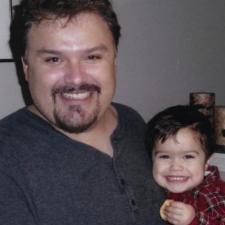
Leslie M. answered • 03/01/21
Medical, Microbiology, Math and Spanish Tutor
Cellular respiration:Cellular respiration is a collection of three unique metabolic pathways: glycolysis, the citric acid cycle, and the electron transport chain.
O2 is used to break down sugar. Oxygen is the final electron acceptor of the electron transport chain in the final step of cellular respiration. Oxygen combines with electrons and hydrogen ions to produce water.
The enzymatic reactions of cellular respiration begin in the cytoplasm, but most of the reactions occur in the mitochondria. Cellular respiration occurs in the double-membrane organelle called the mitochondrion.
CO2 is produced after O2 use in the mithocondria
Basic characteristics of an epithelial layer. a Epithelial cells are joined together by junctions [tight junctions (TJ), gap junctions (GJ)]. Uptake of nutrients and oxygen, and removal of cellular waste products occur on the basolateral surface. Water and ion transport can occur through the transcellular or paracellular pathways. b Absorption is mainly driven by active Na+ absorption through ENaC in the apical membrane and the Na+/K+-ATPase in the basolateral membrane creating an electrochemical driving force for paracellular passive Cl− transport. Water then follows either through aquaporins or the paracellular pathway. c Secretion is mainly driven by Cl− secretion through CFTR and other Cl− channels in the apical membrane. NKCC1 and the coupled action of an anion exchanger and NBC in the basolateral membrane accumulate Cl− in the cell. Active Cl− secretion creates the driving force for Na+ movement across the epithelium through the paracellular pathway and water transport occurs paracellularly and/or transcellularly. Red and green arrows show active transport, and yellow arrows show passive transport.
TAKEN from www.ncbi.nlm.nih.gov/pmc/articles/PMC5209439/figure/Fig1/?report=objectonly
A muscle fiber is excited via a motor nerve that generates an action potential that spreads along the surface membrane (sarcolemma) and the transverse tubular system into the deeper parts of the muscle fiber. A receptor protein (DHP) senses the membrane depolarization, alters its conformation, and activates the ryanodine receptor (RyR) that releases Ca2+ from the SR. Ca2+ then bind to troponin and activates the contraction process (Jurkat-Rott and Lehmann-Horn 2005).
.Local depolarization (end plate potential):
• ACh binding opens chemically (ligand) gated ion channels
• Simultaneous diffusion of Na+ (inward) and K+ (outward)
• More Na+ diffuses, so the interior of the sarcolemma becomes less negative
• Local depolarization – end plate potential




